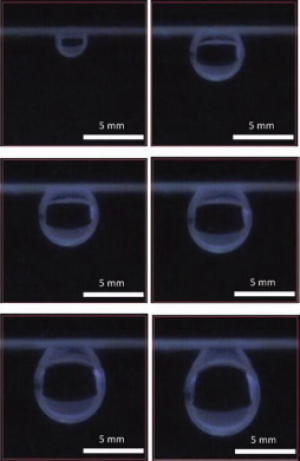Science News
Water Floats on Oil!
April 6, 2012

Defying thousands of years of conventional wisdom, scientists are reporting that it is possible for water to float on oil—a discovery they say has important potential applications in cleaning up oil spills that threaten seashores and fisheries.
Chi Phan and his colleagues at Curtin University in Perth, Australia decided to test conventional wisdom. Running computer models and tests in the lab, they wanted to see how water and oil react to each other under different circumstances, varying the amount of water and types of oil in each experiment.
They discovered that commercial vegetable oil has enough surface tension—the force between liquid molecules that allows beads of water to form or insects to walk on water—to support a droplet's weight, while pure mineral oils do not.
At the same time, they found that vegetable oil could not support drops bigger than about one hundredth of a cubic inch.
A video of the water droplet slowly increasing shows how this works and ScienceNOW explains it well:
The oil surface droops like a rubber membrane, allowing the above air—which is much lighter than oil and water—to extend beneath the surface's average level.
The researchers suggest the new knowledge could help clean up oil spills, where water-borne, oil-eating microbes will mix more easily into the oil if suspended in the tiny-enough droplets.
“This result can lead to a new and advanced mechanism in processing oil/water mixtures, such as biodegrading process of unwanted oils, including vegetable oils, sand oil tailings and oil spillages,” the scientists explain in a paper in the latest issue of the American Chemical Society’s journal Langmuir.
Image: ACS